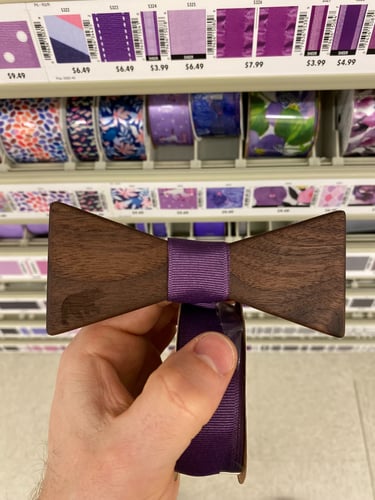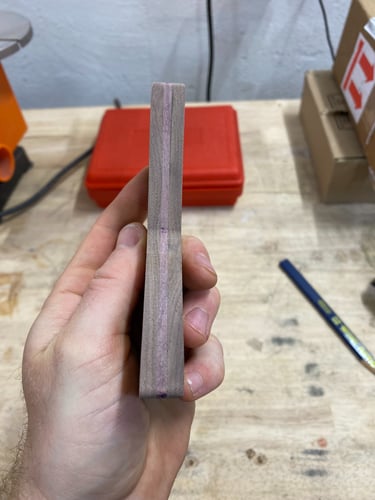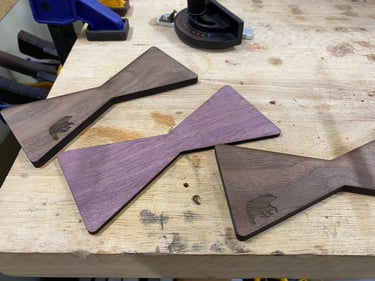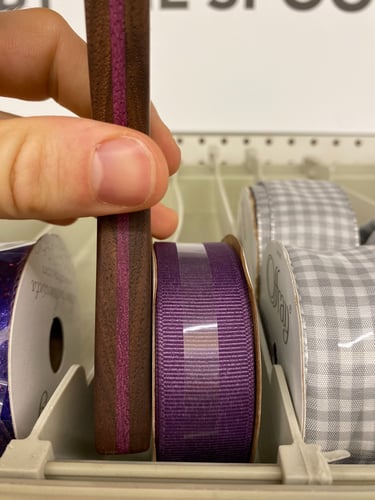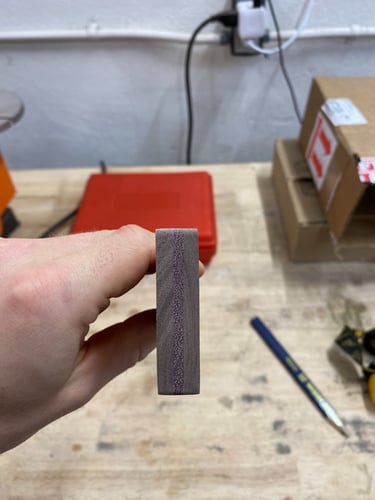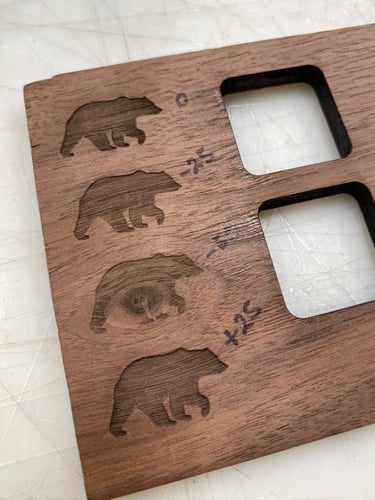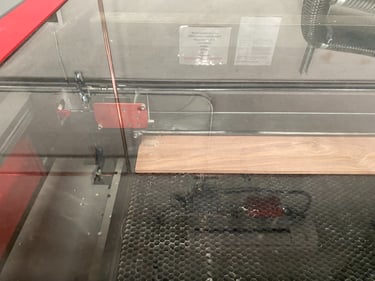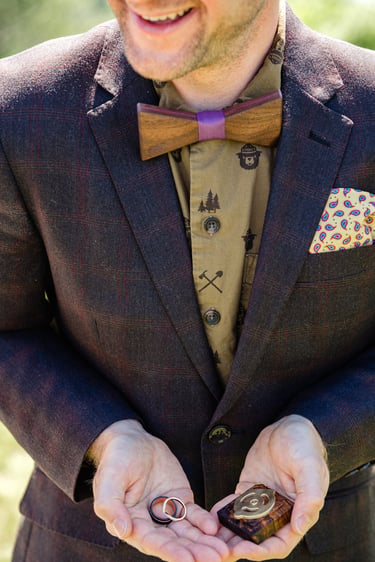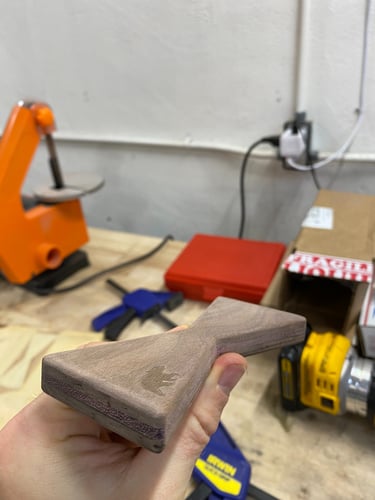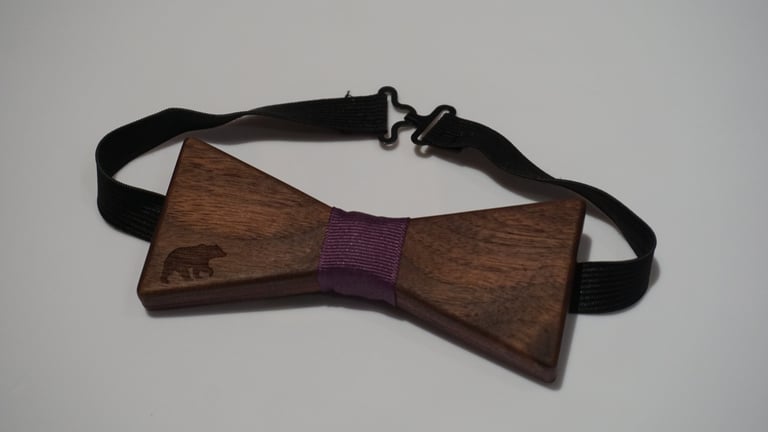
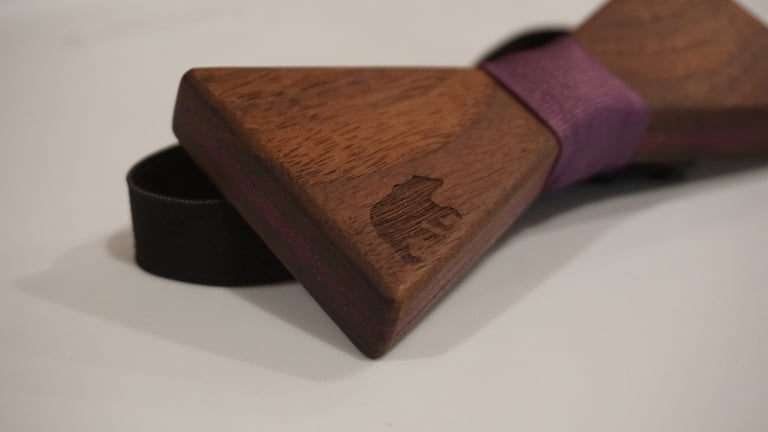
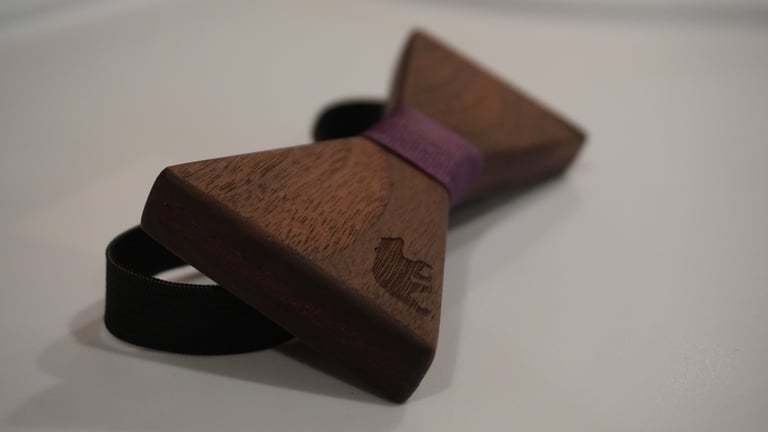
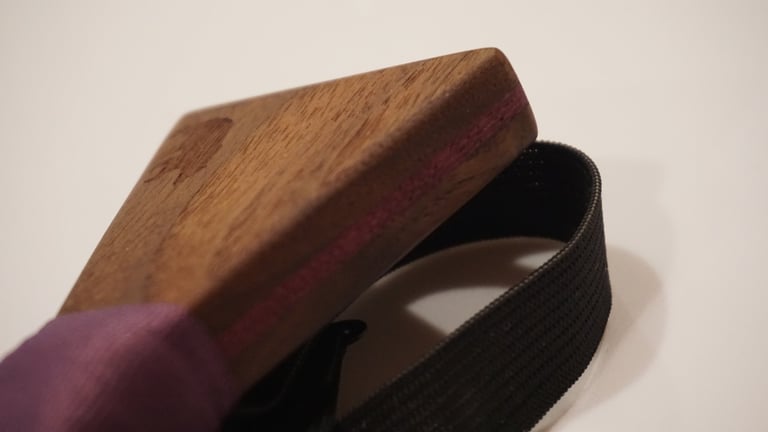
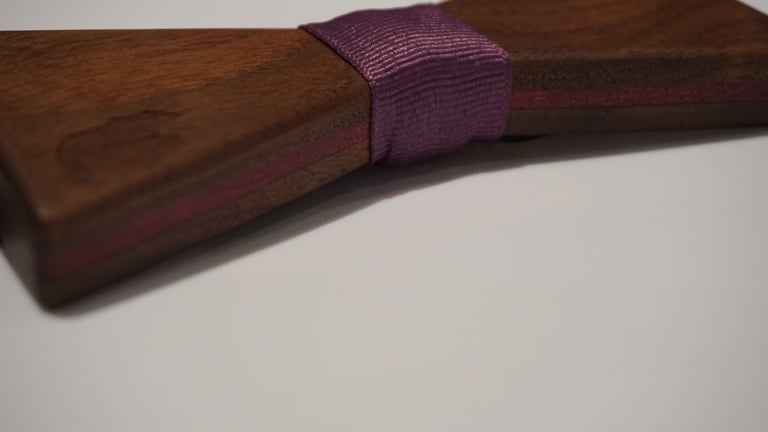







Technical Details
Woods Used: Walnut and purple heart
Size: 5x2x0.5in
Finish: 400grit followed by hardwax oil (Rubio Monocoat)
Project Challenges and Lessons Learned:
Wood bowties are not particularly novel. You can find many examples online. But one with purple heart inlay and a rastered bear? I challenge you to find that! I made this bowtie for my wedding day which you can find all the details on here: Grizzly Bear Wedding. I want to use this project to highlight two specific things I have learned:
1. It is commonly suggested online that when using oil finishes, sanding above 220 grit is not necessary because it will not offer a more smooth finish and may actually prevent the wood from absorbing the oil because it closes the pores. Rubio Monocoat specifically recommends not using a fine grit sandpaper and to never exceed 150 grit. Honestly, this advice never sounded right to me and I have seen no physical evidence to support the theory. I always ignored it and went to at least 220grit with Rubio Monocoat. For this project I went to 400grit. No problem. On the contrary, the appearance and texture were noticeably enhanced. While it is possible that some wood/oil combinations may react differently, in my experience, this internet wisdom has not proven accurate. I encourage you to conduct your own experiments.
2. Purple heart looks awful after cutting or sanding. This is because the vibrant purple color we admire is only present on the outside surface. When the wood comes into contact with air and UV light, it undergoes oxidation resulting in that rich purple hue. After cutting into the wood you will need to allow time for the oxidation process to occur to restore the color. Typically, this does not take too long, maybe just a few days at room temperature in the garage. But you can speed up the process with increased temperature and/or exposure to UV. You can also change the tone depending on what temperature you get the wood too. I like to put small pieces of wood in a toaster oven and start at low temperatures (around 150F), gradually increasing in order to darken the tone if I want. Patience is key, and it is worth experimenting with different temperatures to achieve your desired results. Put larger pieces that do not fit in an oven out in the sun or use a handheld heat gun. Or just let them sit in the garage and wait. Be cautious of wood warping, and take your time regardless of the method you use.

